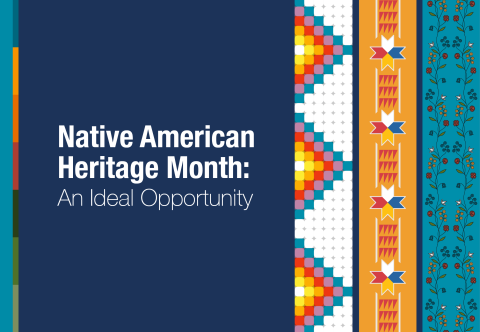
Centuries before NIH was built on this land we call Bethesda, the Piscataway-Conoy Tribe lived here. We need to acknowledge this relationship and pay respect to the Piscataway-Conoy people and their ancestors and future generations of Piscataway descendants.
Acknowledging that the land where NIH is headquartered belonged to Tribal communities and respecting the heritage and history of Native Americans is important and brought to the forefront during Native American Heritage Month. Ensuring that Native Americans have the opportunities to be included in the scientific workforce is essential to gain unique perspectives in biomedical and behavioral research.
Native American Heritage Month provides an ideal opportunity to learn more about Native American contributions to scientific research.
This blog introduces a new initiative from my office that involves outreach to Tribal Colleges and Universities (TCUs), reflects on my experience in a state with a large Native American population, and describes NIH’s Tribal Health Research Office (THRO).
EARA
This month, the COSWD office announced the Engagement and Access for Research-Active Institutions (EARA) initiative. Led by the COSWD on behalf of UNITE, EARA aims to connect research-active institutions (RAIs)—TCUs, Historically Black Colleges and Universities, minority-serving institutions, and colleges and universities in rural areas—with NIH opportunities.
We refer to RAIs as institutions that serve historically underrepresented populations in biomedical and behavioral research; award degrees in science, technology, engineering, mathematics, and medicine; and have received an average of no more than an average of $25 million in NIH Research Project Grant support for the past three fiscal years.
To learn more, please join us for our virtual seminar “How Do Research-Active Institutions (e.g., HBCUs, TCUs, and MSIs) Impact the Diversity of the Scientific Workforce?” on November 30, from 1:30–3:00 p.m. ET.
Oklahoma
The federal government recognizes 574 American Indian tribes and Alaska Native entities in the U.S. The demographic and health indicators vary as each Tribe has its own history, governance, culture, and language. Tribal membership ranges from under 20 members to nearly 400,000 members. Reservations range from a little more than an acre to more than 27,000 square miles. Approximately 70% of American Indians and Alaska Natives live in urban areas.
As a child growing up in Oklahoma, which has one of the highest percentages of Native Americans in the country, I have fond memories of going with my relatives to the Southern Plains Indian Museum in Anadarko to better understand the cultures represented by the tribes in Oklahoma.
After finishing my residency, I returned to Oklahoma to join the faculty of the University of Oklahoma College of Medicine. In that position, I interacted with the Sac and Fox Nation and the Choctaw Nation Health system as I pursued research on nutrition and function in older populations. I even had the opportunity to meet Wilma Mankiller, the first female Principal Chief of the Cherokee Nation.
NIH’s Tribal Health Research Office and Office on Equity, Diversity and Inclusion
My experiences as a physician and researcher in Oklahoma give me a special appreciation for the value of NIH’s Tribal Health Research Office (THRO).
One of the newest offices at NIH, THRO was established to collaborate with Tribal Nations and is a vibrant hub, strategically consulting, coordinating, and collaborating with Tribal partners and native serving organizations to generate an American Indian/Alaska Native (AI/AN) science and research workforce that builds healthy lives and communities. THRO works as a conduit between Tribes and NIH ICOs to improve understanding of culturally appropriate and relevant research and increase support of research and researchers grown out of the Tribal communities. With the help of THRO, NIH ICOs have worked to increase research and training opportunities for AI/AN people.
In April, Dr. Karina Walters, an enrolled member of Choctaw Nation of Oklahoma, became the new Director of THRO. She is a dynamic leader with immense accomplishments in social epidemiology and health prevention research with extensive experience in American Indian and Alaska Native populations.
In addition to learning about the THRO, this month is an opportune time to visit NIH’s Office of Equity, Diversity and Inclusion (EDI) website for NIH leadership perspectives on the theme Indigenous Resilience and Cultural Revitalization.
Every tribe is different, and researchers need to be respectful of those differences, working collaboratively with Tribal leaders to address issues identified as needs.

